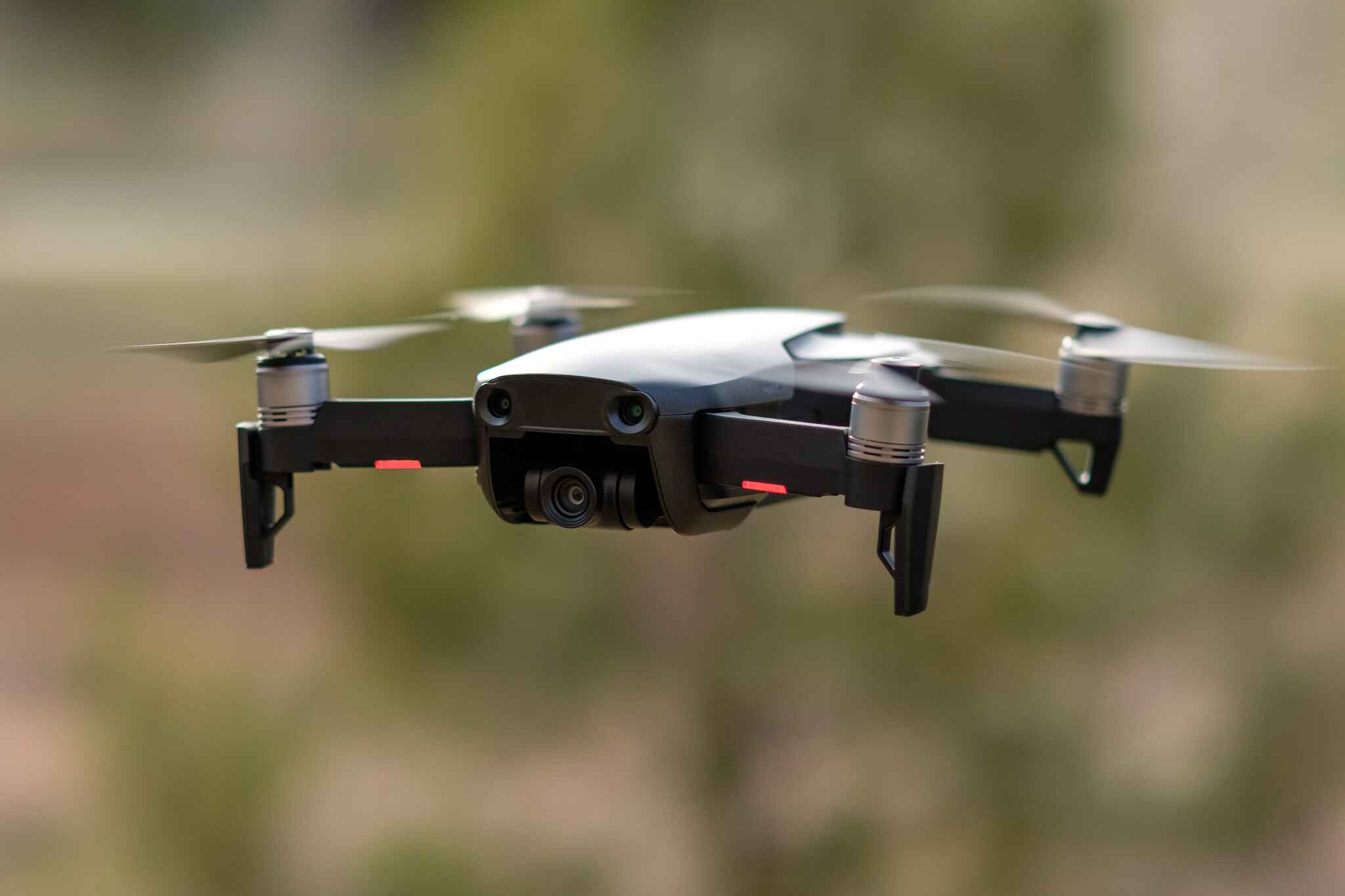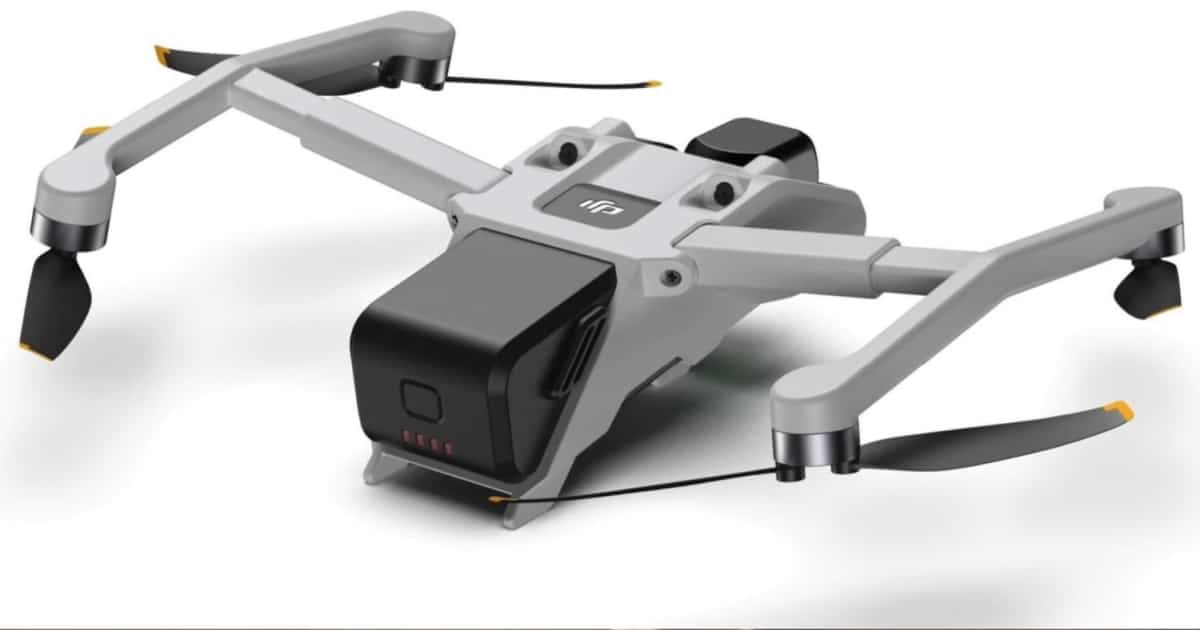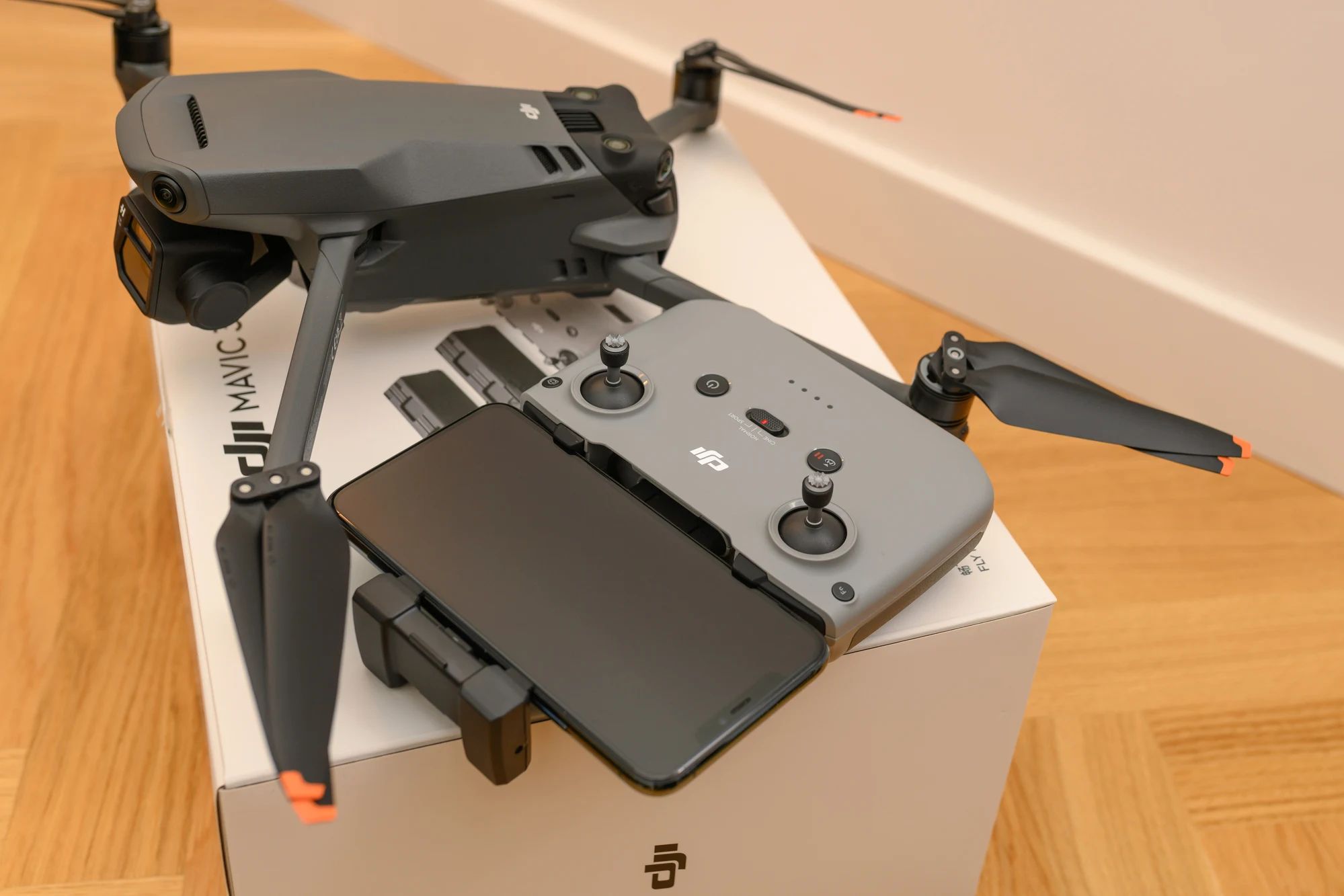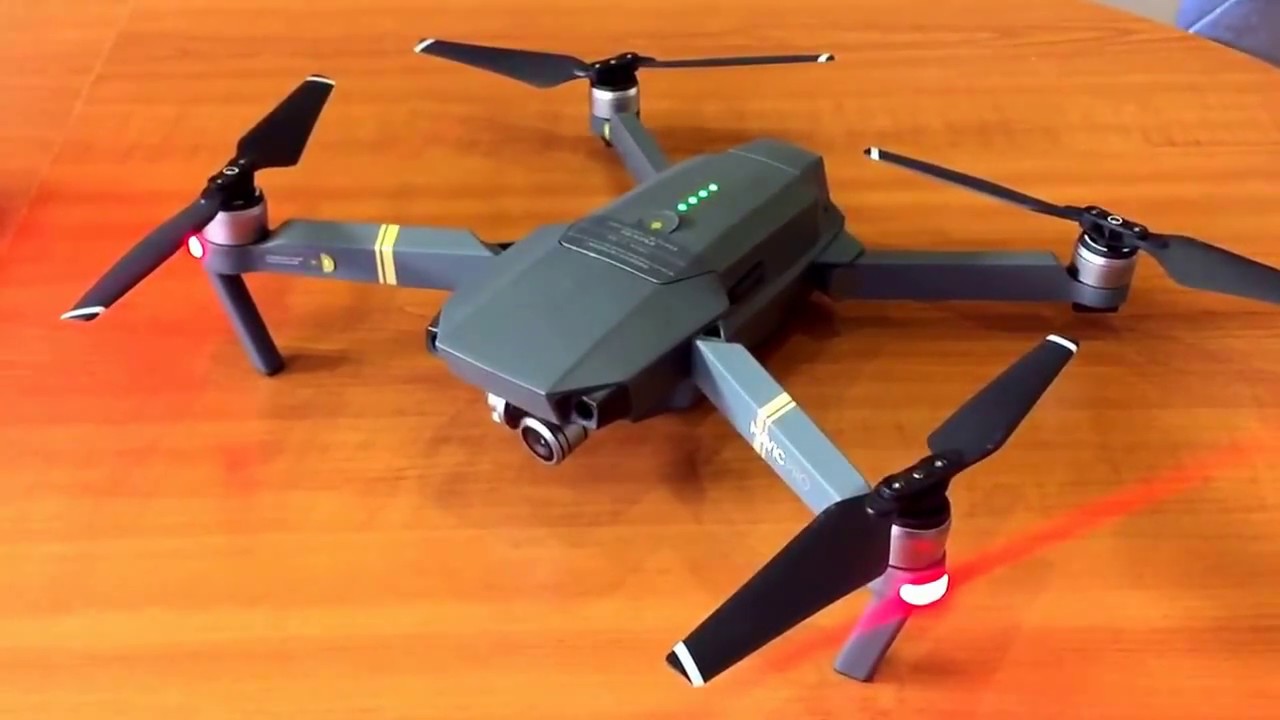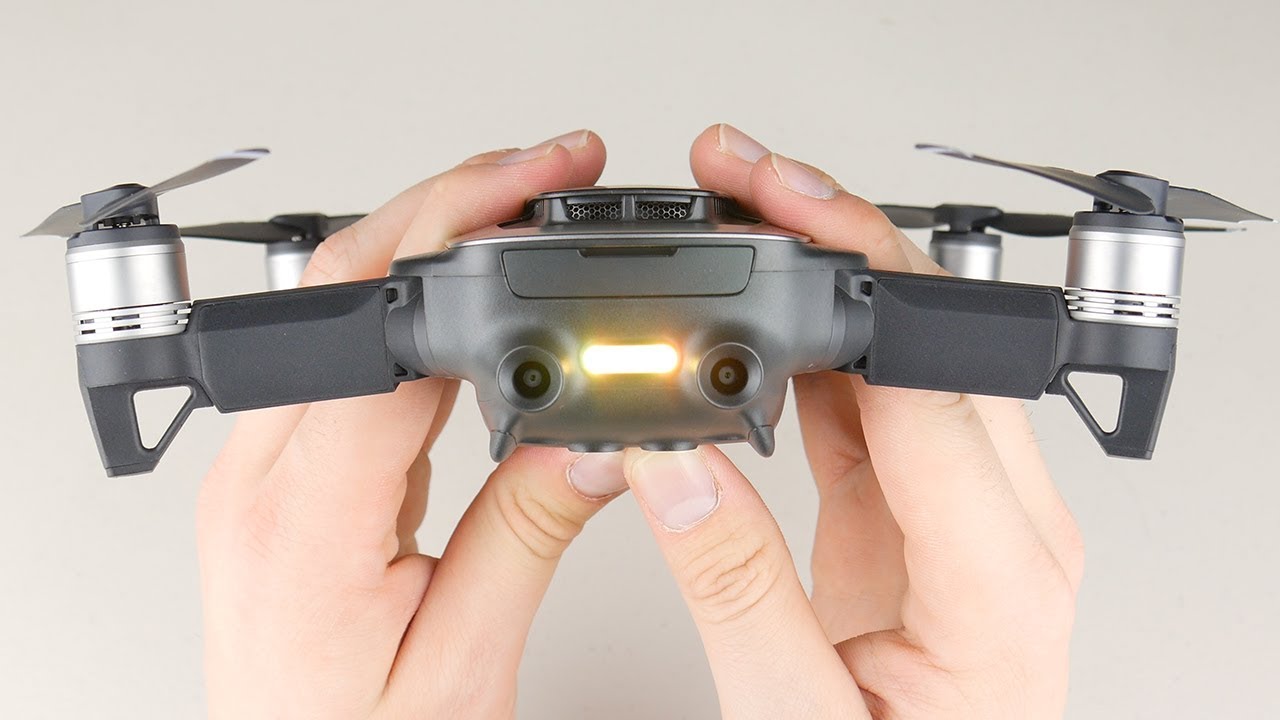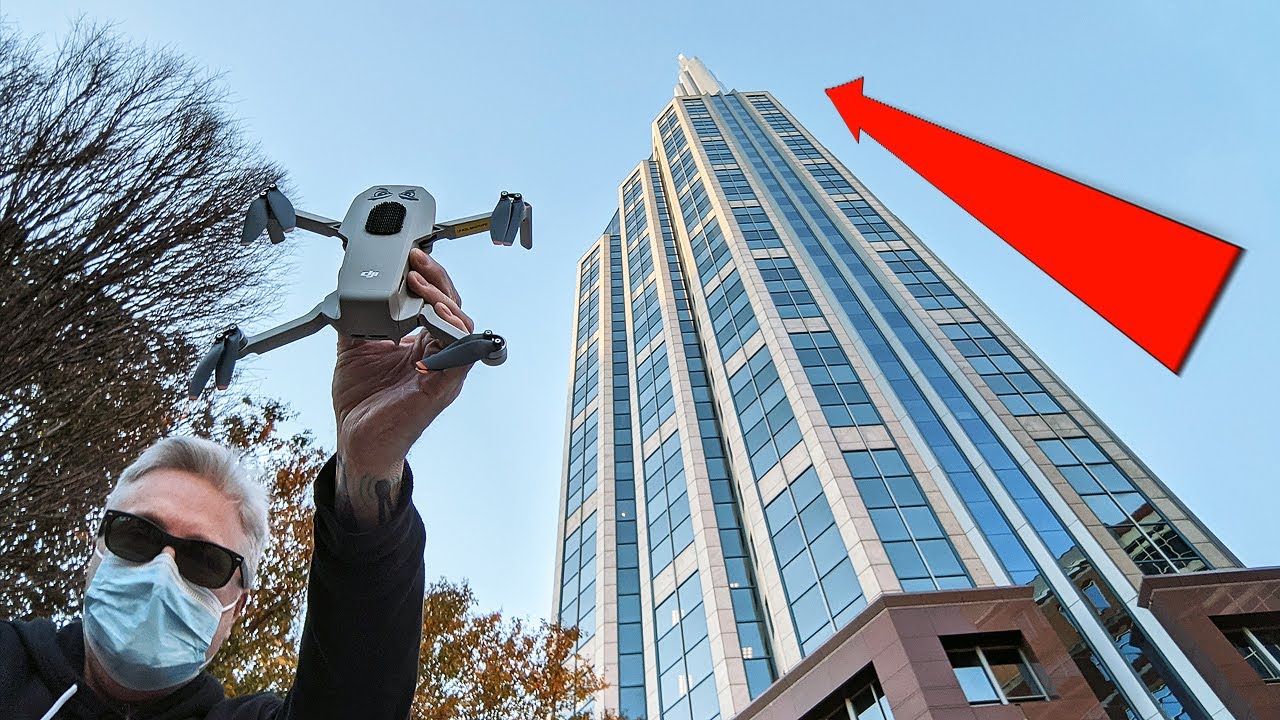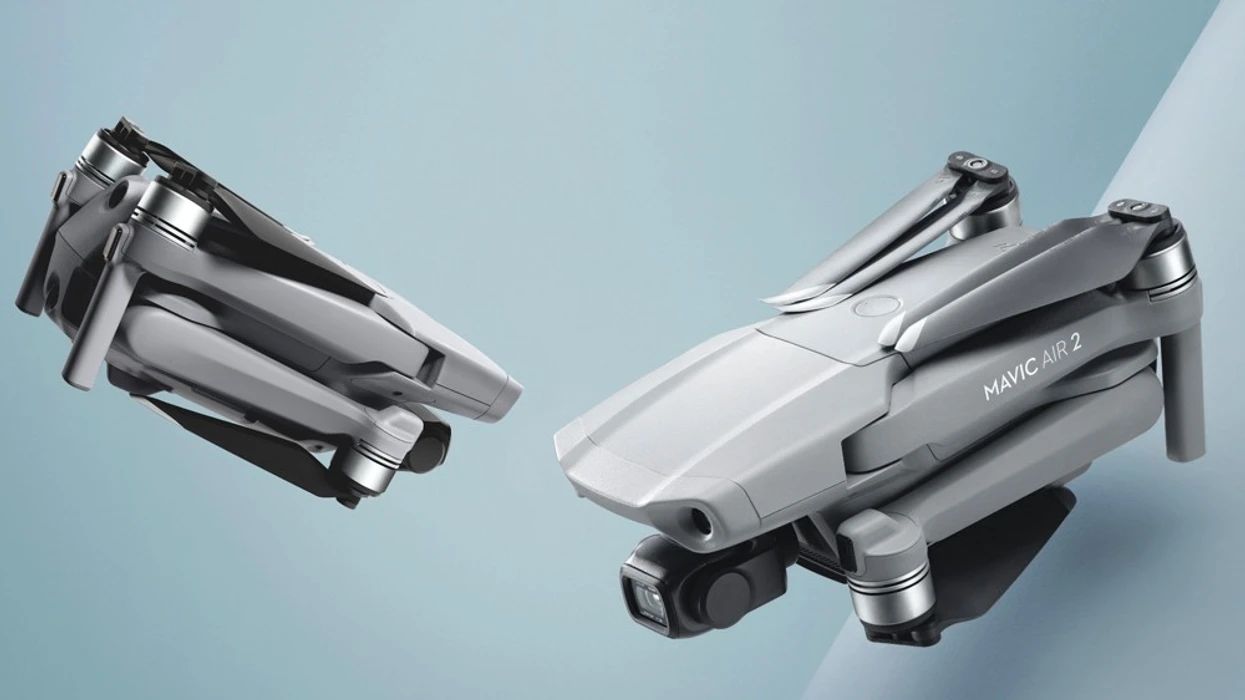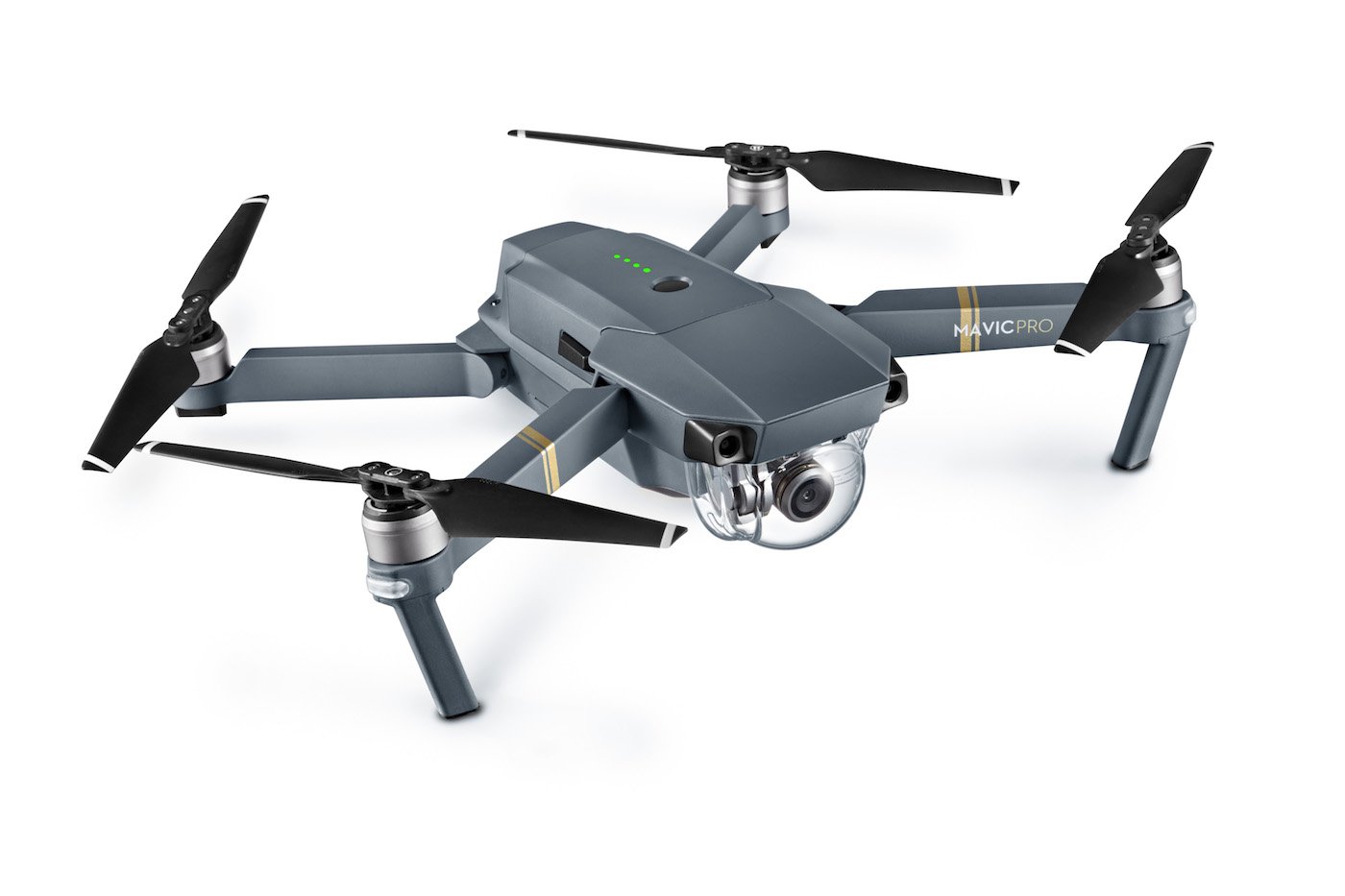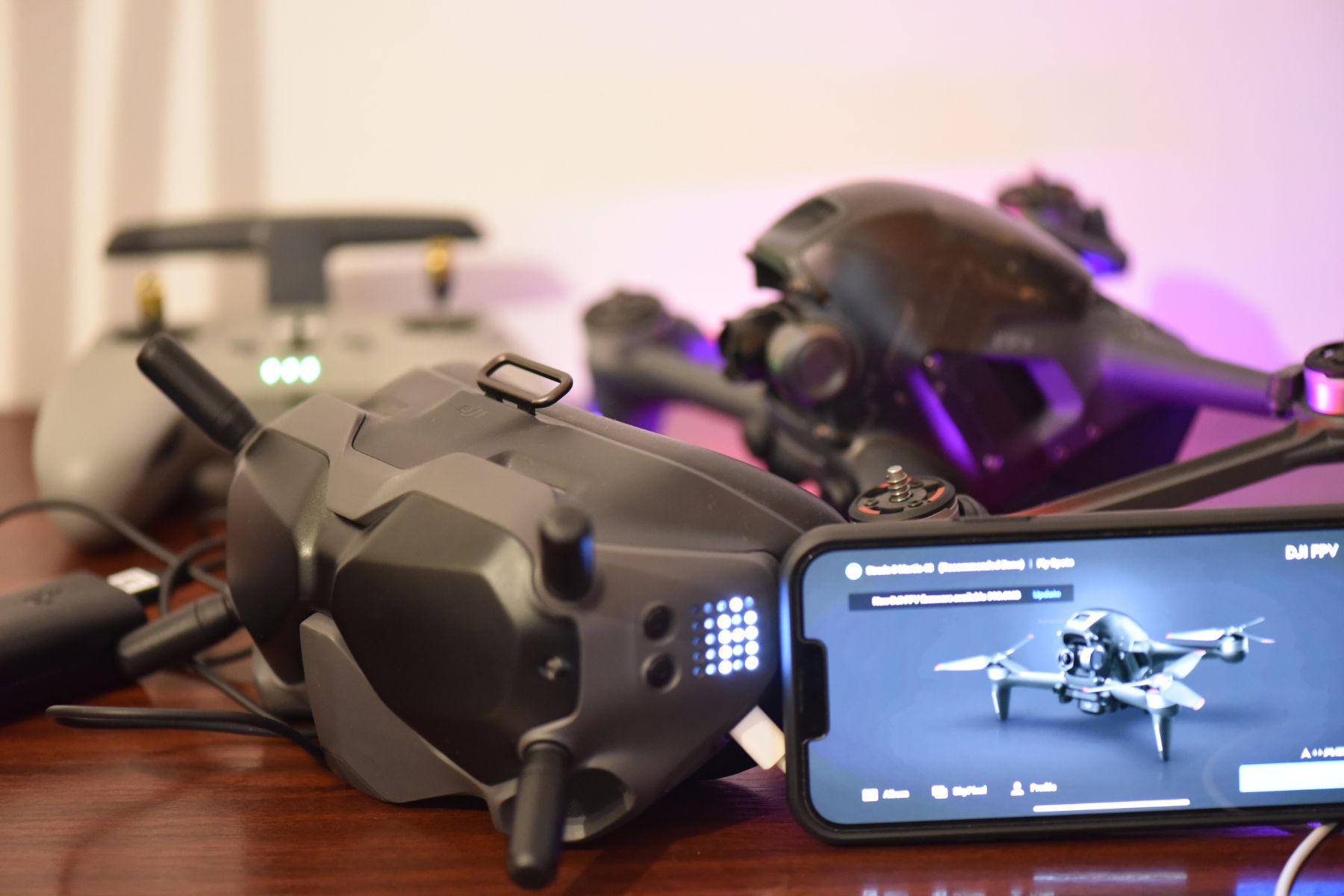Introduction
Welcome to the world of aerial photography and videography with the DJI Mavic! Designed for both professionals and hobbyists alike, the DJI Mavic is a compact and versatile drone that offers exceptional image quality and impressive flight capabilities. Whether you’re a novice or an experienced pilot, the Mavic offers an intuitive flying experience that is sure to elevate your creativity and capture breathtaking moments from a unique perspective.
With its foldable design and lightweight construction, the Mavic is the perfect companion for capturing stunning aerial shots on the go. Equipped with a high-resolution camera, intelligent flight modes, and advanced flight controls, the Mavic opens up a world of possibilities for creating dynamic and visually captivating content.
In this guide, we will take you through the essential aspects of using the DJI Mavic, from unboxing and setup to mastering flight controls and capturing incredible footage. Whether you’re a professional photographer looking to add a new dimension to your work or a hobbyist eager to explore the skies, this guide will provide you with the knowledge and techniques you need to maximize your Mavic experience.
Throughout this guide, we will discuss the various features and functionalities of the DJI Mavic, providing comprehensive step-by-step instructions, tips, and tricks to help you unlock the full potential of your drone. We will also delve into the intelligent flight modes that can transform your aerial photography and videography, as well as provide essential safety guidelines to ensure a secure and responsible flight experience.
So, whether you’re planning to capture breathtaking landscapes, document special events, or simply enjoy the thrill of flying a drone, get ready to embark on an exciting journey with the DJI Mavic. Let’s dive in and discover the incredible possibilities that await!
Getting to Know the DJI Mavic
The DJI Mavic is a compact and highly advanced drone that packs a myriad of features in its small frame. Before taking to the skies, it’s important to familiarize yourself with the different components and functions of the Mavic.
First and foremost, let’s take a look at the Mavic’s physical structure. The drone consists of four arms that fold neatly into its body, making it incredibly portable and easy to transport. When unfolded, the arms lock securely into place, providing stability during flight.
The front of the Mavic houses the camera, which is mounted on a three-axis gimbal. The gimbal allows for smooth and stable footage by compensating for any drone movements during flight. The camera itself is capable of capturing high-quality still photos and videos at resolutions of up to 4K.
Located on the underside of the drone, you’ll find the Mavic’s sensors and landing gear. The sensors provide obstacle avoidance capabilities, helping to prevent collisions with objects or structures. The landing gear, equipped with small shock-absorbing feet, ensures a safe landing on various surfaces.
Now, let’s move on to the Mavic’s flight controller. The controller is the primary device used to operate the drone. It features a built-in LCD screen, control sticks, and various buttons for accessing different flight functions. The controller connects to your mobile device via a dedicated app, allowing you to monitor the drone’s live feed and access additional settings and features.
The Mavic’s app provides a user-friendly interface that displays crucial flight information, such as battery life, altitude, and GPS positioning. It also allows you to control the camera settings, adjust flight modes, and customize the drone’s behavior according to your preferences.
Additionally, the Mavic comes with a rechargeable battery that provides a flight time of around 30 minutes, depending on flying conditions and usage. It is recommended to have spare batteries on hand to extend your flight sessions.
With its compact design, advanced features, and intuitive controls, the DJI Mavic is truly a remarkable drone. By familiarizing yourself with its components and functions, you’ll be well-prepared to take full advantage of its capabilities and embark on exciting aerial adventures.
Unboxing and Setting Up
Unboxing the DJI Mavic is an exciting moment as you prepare to embark on your aerial adventure. Let’s walk through the unboxing and setup process to ensure a seamless start with your new drone.
When you open the Mavic’s box, you’ll find the drone itself, the remote controller, and a collection of accessories. Carefully remove each item and set them aside for now.
The first step is to charge the Mavic’s batteries. Locate the battery charging hub and connect it to a power source using the included charger. Insert the battery into the charging hub, and the LED indicators will show the charging progress. It’s important to fully charge the batteries before your first flight to maximize your flight time.
While the batteries are charging, let’s move on to setting up the remote controller. Remove the controller from its packaging and unfold the phone holder located at the bottom. Attach your smartphone securely to the controller using the adjustable arms. Make sure your phone is connected to the internet and has the DJI Go or DJI Fly app installed.
Next, it’s time to prepare the Mavic for flight. Ensure the drone’s propellers are securely attached by rotating them clockwise until they lock into place. Double-check that all the protective film has been removed from the camera lens and sensors, as this can affect the image quality.
Now, power on the remote controller by pressing and holding the power button. Once the controller is powered on, you’ll hear a series of beeps, indicating that it’s ready to connect to the Mavic.
To connect the Mavic to the controller, turn on the drone by pressing the power button on the battery once. Press and hold the power button once more until you hear the startup sound, and the LED lights on the drone start to flash. The Mavic will then establish a connection with the remote controller, and you’ll see the live feed from the drone’s camera on your smartphone screen.
Before taking off, it’s crucial to perform a firmware update to ensure your Mavic is running on the latest software. Simply connect your smartphone to the internet and follow the prompts within the DJI Go or DJI Fly app to update the firmware. Firmware updates often include important flight optimizations and new features, so it’s essential to keep your Mavic up to date.
With the batteries charged, the remote controller set up, and the firmware updated, you’re now ready to take flight with your DJI Mavic. But before we soar into the skies, let’s explore the Mavic’s controller and app functionalities in the next section.
Understanding the Mavic Controller and App
The DJI Mavic’s controller is a vital component that allows you to navigate the drone and access its various features. Combined with the dedicated mobile app, it provides a seamless and intuitive way to control your Mavic and capture stunning aerial footage.
Let’s start by taking a closer look at the controller itself. The Mavic’s controller features two control sticks, which are used to maneuver the drone in different directions. The left stick controls the altitude and rotation, while the right stick controls the drone’s horizontal movements. Familiarize yourself with these control sticks and practice their movement to gain precision and control when piloting the Mavic.
In addition to the control sticks, the controller has several buttons that offer convenient access to various functions. The Return to Home button brings the Mavic back to its takeoff point, ensuring a safe and reliable return in case of signal loss or low battery. The Capture button allows you to take photos and start/stop recording videos during flight without having to rely on the app’s controls.
Now, let’s move on to the mobile app that complements the Mavic’s controller. The DJI Go or DJI Fly app is compatible with smartphones and provides an extensive range of features and settings. After connecting your smartphone to the controller, launch the app and you’ll be greeted with a user-friendly interface that displays the live feed from the Mavic’s camera.
One of the key features of the app is the ability to access and adjust camera settings. From within the app, you can control the camera’s exposure, shutter speed, ISO, and white balance, allowing you to capture the perfect shot in various lighting conditions. Additionally, the app provides access to different shooting modes, such as burst mode or time-lapse, to further enhance your creative possibilities.
Another important function of the app is the ability to view telemetry data, including altitude, distance from home, battery level, and GPS positioning. This information is crucial for monitoring and ensuring a safe flight experience. The app also provides options to adjust flight modes, activate intelligent flight features, and customize the drone’s behavior according to your preferences.
As you explore the app, you’ll also discover advanced flight modes that can take your aerial photography and videography to the next level. These modes, such as ActiveTrack or Waypoints, allow you to capture dynamic shots with ease and precision. Take some time to familiarize yourself with these modes and experiment with different compositions and movements to unlock the full potential of your Mavic.
Understanding the Mavic’s controller and app functionalities is key to harnessing the full capabilities of your drone. By mastering these controls and exploring the app’s features, you’ll be able to capture incredible footage from the skies and create visually stunning content.
Pre-flight Checklist
Before taking your DJI Mavic to the skies, it’s crucial to perform a pre-flight checklist to ensure a safe and successful flight. By following these steps, you’ll be able to minimize risks and maximize your enjoyment while piloting your drone.
The first item on the checklist is to choose the right flying location. Select an open area away from people, buildings, and obstacles. Check local regulations and restrictions that may affect where you can fly your drone. Ensure you have permission to fly in the chosen area if required.
Next, inspect the Mavic and its components. Check that the propellers are secured tightly and not damaged. Inspect the drone’s body for any signs of wear or damage that may affect its performance. Ensure that all connecting cables are properly attached and that the battery is securely inserted.
Verify that the remote controller’s battery is adequately charged. The last thing you want is for the battery to die mid-flight. Check that your smartphone is fully charged as well to ensure uninterrupted connectivity with the DJI Go or DJI Fly app.
Now, confirm GPS reception by checking the satellite icon on your controller or app screen. A strong GPS signal is essential for accurate positioning and to utilize certain flight modes effectively.
Perform a firmware check on both the drone and the controller. Make sure that you are running the latest firmware versions by connecting your smartphone to the internet and following the prompts within the DJI Go or DJI Fly app. Updating the firmware ensures optimal performance and adds new features or fixes bugs.
It’s time to power on the Mavic and the remote controller. Start by turning on the controller and then press the power button on the Mavic’s battery. Wait for the Mavic to establish a stable connection with the controller, indicated by solid green lights on both devices. Check the live feed on your smartphone to confirm a clear image from the camera.
Calibrate the compass by following the instructions in the app. Compass calibration is crucial for accurate flight control and must be done in an open area away from magnetic interference, such as metal objects or power lines.
Check the weather conditions and make sure they are suitable for flying. Avoid flying in strong winds, rain, or foggy conditions as they can affect the stability and maneuverability of the drone. Also, keep an eye on the battery temperature. Extreme temperatures can adversely affect battery performance.
Lastly, double-check the flight modes and settings in the DJI Go or DJI Fly app. Ensure that the intelligent flight modes are enabled or disabled according to your preferences. Review the camera settings to ensure they are optimized for the type of content you want to capture.
By diligently following this pre-flight checklist, you’ll have peace of mind knowing that your DJI Mavic is ready for a safe and enjoyable flight. Remember, it’s better to invest a few extra minutes in preparation than to encounter issues mid-flight. Now that your checklist is complete, it’s time to launch your Mavic and experience the joy of aerial photography and videography.
Basic Flight Controls
Understanding the basic flight controls of the DJI Mavic is essential for maneuvering and navigating your drone with ease. By familiarizing yourself with these controls and practicing their movements, you’ll gain confidence and be able to capture stunning aerial shots effortlessly.
The Mavic’s flight controls are primarily operated using the remote controller. The control sticks are the main inputs for controlling the drone’s movements. The left control stick, also known as the throttle stick, is used to control the altitude and rotation of the Mavic. Pushing the stick forward increases the drone’s altitude, while pulling it back decreases the altitude.
The right control stick, known as the pitch and roll stick, controls the drone’s horizontal movements. Pushing the stick forward causes the Mavic to move forward, and pulling it back makes it move backward. Tilting the stick to the left or right results in the drone’s corresponding lateral movements.
Practice controlling the Mavic’s movements in a safe and open area to become comfortable with the controls. Start with small and gentle movements, gradually increasing your confidence and skill. Remember to keep your actions steady and smooth to maintain stable flight.
In addition to the primary flight controls, the Mavic comes equipped with several intelligent flight modes that enhance your flying and filming experience. These modes allow you to execute pre-programmed flight paths or automatically follow and track subjects.
One of the most popular intelligent flight modes is ActiveTrack, which enables the Mavic to follow and capture footage of a moving subject while avoiding obstacles. Simply select the subject on your app’s screen, and the drone will lock onto it and keep it in frame as it moves. This mode is especially useful for capturing dynamic sports or activities.
Another useful mode is Point of Interest (POI), which allows you to select a specific point or object for the Mavic to orbit around. You can adjust the radius and speed of the orbit to capture unique and cinematic shots.
Additionally, the Mavic offers modes like Gesture Control, TapFly, and Waypoints, each bringing its own set of functionalities and creative possibilities. Experiment with these modes to discover new ways to capture breathtaking aerial footage.
Lastly, it’s essential to practice responsible and safe flying techniques. Always maintain visual line of sight with the drone and avoid flying in restricted or dangerous areas. Familiarize yourself with the local regulations and airspace rules to ensure compliance. Also, be mindful of your surroundings and respectful of others’ privacy when operating the Mavic.
By mastering the basic flight controls and exploring the intelligent flight modes of the DJI Mavic, you’ll be able to navigate the skies with confidence and capture stunning shots from unique perspectives. Remember to practice regularly and stay updated with the latest flying techniques to continuously enhance your piloting skills.
Capturing Stunning Aerial Photos and Videos
The DJI Mavic offers incredible capabilities for capturing breathtaking aerial photos and videos. With its high-resolution camera and advanced stabilization features, you can unleash your creativity and capture stunning visuals from a unique perspective. Here are some tips and techniques to help you make the most of your Mavic’s imaging capabilities.
Composition is key when it comes to capturing stunning aerial shots. Take the time to explore your surroundings and look for interesting patterns, textures, and subjects. Experiment with different angles and perspectives to create visually striking compositions.
Utilize the Mavic’s camera settings to control exposure, shutter speed, ISO, and white balance. Adjusting these parameters allows you to capture the desired mood and lighting conditions for your shots. For example, using a long exposure can create stunning light trails or smooth out moving water.
When taking aerial photos, consider using the Mavic’s burst mode to capture multiple images in quick succession. This increases your chances of getting a perfectly timed shot, especially when capturing fast-moving subjects or action shots. Additionally, experimenting with the different camera modes, such as HDR or panorama, can help you capture scenes with a wider dynamic range or expansive landscapes.
For capturing videos, take advantage of the Mavic’s gimbal stabilization to achieve smooth and cinematic footage. Practice utilizing the different flight movements and camera angles to add depth and visual interest to your videos. For instance, try performing slow, controlled movements while recording to create a cinematic and professional look.
Explore the intelligent flight modes offered by the Mavic to add dynamic elements to your footage. ActiveTrack can help you capture smooth tracking shots of moving subjects, while QuickShots offer pre-programmed flight paths and camera movements for capturing unique and creative shots.
Keep an eye on the battery life of the Mavic during your shooting sessions. It’s essential to plan and time your flights accordingly to avoid running out of power in the middle of capturing a precious shot. Having spare batteries on hand ensures that you can extend your shooting time and never miss a moment.
After capturing your aerial photos and videos, take the time to review and edit your footage. Look for opportunities to enhance the colors, adjust the exposure, or apply creative filters to bring out the best in your shots. Numerous photo and video editing software options are available, both online and offline, to help you refine your captured content.
Remember, practice makes perfect. Take the time to experiment with different settings, techniques, and compositions to develop your aerial photography and videography skills. The possibilities are endless with the DJI Mavic, so unleash your creativity and capture stunning imagery from the skies.
Utilizing Intelligent Flight Modes
The DJI Mavic offers an array of intelligent flight modes that take your aerial photography and videography to the next level. These pre-programmed features allow you to capture professional-level footage with ease and add creative elements to your shots. Let’s explore some of the most useful intelligent flight modes and how to use them effectively.
One of the standout features is ActiveTrack, which enables the Mavic to autonomously track and follow a subject of your choice. Simply select the subject on your app’s screen, and the drone will keep it in the frame as it moves. This mode is perfect for capturing dynamic shots of people engaging in sports, activities, or any subject in motion.
For capturing breathtaking cinematic shots, the QuickShots mode offers a range of pre-programmed flight paths and camera movements. Select from options like Dronie, Circle, Helix, or Rocket, and the Mavic will automatically execute the chosen shot. These QuickShots add an impressive and professional touch to your footage with minimal effort.
If you want to capture an aerial perspective from a stationary point of interest, the Point of Interest (POI) mode is perfect. Select a point or object for the Mavic to orbit around, adjust the radius and speed, and let the drone smoothly circle the subject, capturing stunning shots from all angles.
The Waypoints mode allows you to plan a flight path by setting specific GPS coordinates for the Mavic to follow. This mode is ideal for capturing aerial footage of specific locations or for creating time-lapse sequences. Map out the desired route, set the speed and altitude, and watch as the Mavic precisely flies along the designated path.
The Gesture Control mode is perfect for capturing selfies or group photos without needing the remote controller. After enabling this mode, you can simply use predefined hand gestures to trigger the camera and capture photos or videos. This feature is incredibly handy when you don’t have the controller readily available.
Utilize the TapFly mode to effortlessly fly the Mavic to a specific point on the screen with a single tap. This feature makes it easy to focus on the composition and framing of your shots while the drone handles the navigation. Simply tap on the desired location on the app’s screen, and the Mavic will smoothly fly towards it.
While utilizing these intelligent flight modes, always keep safety in mind. Be aware of your surroundings, and ensure that there are no obstacles in the Mavic’s flight path. Take the time to familiarize yourself with the specific settings and customizable options within each mode to truly unleash your creativity.
Exploring and mastering the intelligent flight modes of the DJI Mavic will elevate your aerial photography and videography game. These features provide innovative and dynamic ways to capture stunning footage and bring your creative vision to life.
Tips for Flying Safely
When operating your DJI Mavic, it’s essential to prioritize safety to ensure a secure and enjoyable flight experience. By following these tips, you’ll mitigate potential risks and fly your drone responsibly.
Before taking off, familiarize yourself with local regulations and airspace restrictions. Different areas may have specific rules and limitations on drone usage. Ensure that you have the necessary permits or permissions to fly in your chosen location if required.
Perform a pre-flight inspection of your Mavic before each flight. Check the propellers for any signs of damage and ensure they are securely attached. Inspect the body of the drone for wear or loose connections. Verify that the batteries are fully charged and properly inserted. A thorough inspection reduces the likelihood of in-flight malfunctions.
Maintain a clear line of sight with your Mavic at all times. Avoid flying in areas where your drone may disappear from your view or be obstructed by structures or tall objects. Keeping a visual on your drone allows you to react promptly to changes in its flight behavior or external factors.
Monitor the Mavic’s battery level during flight and plan your flight time accordingly. Avoid pushing the limits of your battery’s charge to ensure a safe return to the predetermined home point. Flying with spare batteries is always a good idea, providing you with extended flight time.
Be mindful of the weather conditions before flying. Strong winds, rain, and dense fog can significantly impact the stability and visibility of your Mavic. Additionally, extreme temperatures can affect battery performance. It’s best to fly in calm weather conditions and avoid adverse weather situations.
Ensure you have a reliable GPS signal before flying. The GPS system provides accurate positioning and helps with stability and navigation. A strong GPS signal is especially important when utilizing intelligent flight modes. Make sure to allow sufficient time for the Mavic to establish a stable GPS connection.
Practice safe flying distances from people, vehicles, and other objects. Avoid flying over crowds or near airports, helipads, or other restricted areas. Respect people’s privacy and maintain a safe distance to ensure the safety of others and the security of your flight operation.
Always be prepared for emergencies or unexpected situations. Familiarize yourself with the Return to Home function on your controller. This feature allows the Mavic to automatically return to its takeoff point in case of signal loss or low battery. Understanding how to engage this function can help you regain control of your drone in critical situations.
Lastly, commit to ongoing learning and stay updated with the latest information regarding drone safety and regulations. Keeping up with changes in regulations and guidelines ensures that you’re always operating your drone in compliance with the law. Participate in educational programs and stay connected with the drone community to enhance your knowledge and skills.
By adhering to these safety tips, you’ll foster a responsible and secure flying environment. Prioritizing safety allows you to enjoy your DJI Mavic to its fullest potential while promoting responsible drone operation.
Maintaining and Updating Your Mavic
To ensure optimal performance and longevity of your DJI Mavic, it’s important to properly maintain and regularly update the drone’s software. By following these maintenance and update guidelines, you can maximize your Mavic’s capabilities and enjoy a smooth and reliable flying experience.
One of the essential aspects of maintaining your Mavic is keeping it clean and free from dirt, dust, and debris. After each flight, inspect the drone for any dirt or grime, particularly on the propellers, camera lens, and sensors. Use a soft cloth or brush to gently remove any residue. Keeping the Mavic clean not only improves its aesthetic appeal but also ensures optimal functionality.
Regularly check and tighten the propellers to prevent any unexpected issues during flight. Loose or improperly fastened propellers can affect the drone’s stability and performance. Ensure they are securely attached by rotating them clockwise until they lock into place.
Proper battery care is crucial both for performance and safety. Store your batteries in a cool, dry place, away from direct sunlight and extreme temperatures. Before each flight, inspect the battery for any signs of wear or damage. If the battery shows any abnormalities, such as swelling or leakage, discontinue its use and replace it immediately.
Keep an eye on the battery’s charge cycles. Over time, the battery’s capacity can decrease, resulting in shorter flight times. It is recommended to cycle your batteries periodically by completely draining and recharging them to maintain optimal performance.
Regularly check for firmware updates released by DJI. Firmware updates bring new features, improvements, and bug fixes to the Mavic’s software. To update the firmware, connect your smartphone to the internet and launch the DJI Go or DJI Fly app. Follow the prompts within the app to download and install the latest firmware version. Ensuring you have the most up-to-date software ensures optimal performance and compatibility.
Along with firmware updates, also check for updates to the DJI Go or DJI Fly app. These app updates often introduce new features, enhance existing functionalities, and improve overall stability. Stay vigilant for app update notifications and download them from your device’s app store.
Lastly, it’s advisable to have regular maintenance checks performed by a DJI authorized service center. These professionals can conduct thorough inspections and address any potential mechanical or technical issues. They have the expertise to identify and rectify any problems, ensuring that your Mavic is always in top shape.
By maintaining your Mavic and keeping it up to date with the latest firmware and app versions, you’ll have a drone that performs reliably and consistently. Proper care and updates go a long way in ensuring an optimal and enjoyable flight experience.
Troubleshooting and Common Issues
While the DJI Mavic is a highly advanced and reliable drone, you might encounter some common issues during your flying experience. Understanding how to troubleshoot these issues can help you resolve them quickly and get back to enjoying your drone. Here are some common problems and their possible solutions:
1. GPS Signal Issues: If you’re experiencing poor or unstable GPS signal, try moving to an open area away from tall buildings or structures that might interfere with the signal. Ensure the GPS module on the Mavic is clean and unobstructed. Restarting the drone and the controller can also resolve minor GPS signal issues.
2. Battery Drainage: If you notice your battery getting drained quickly, double-check that there are no apps running in the background on your mobile device that may be consuming battery power. Also, ensure that you are not using the Mavic in extremely cold conditions, as low temperatures can affect battery performance. Calibrating the battery can help recalibrate the power readings and provide accurate battery information.
3. Propeller Issues: If you encounter abnormal vibrations or instability during flight, inspect the propellers for any signs of damage or wear. Make sure the propellers are securely attached and properly balanced. Replacing damaged or worn-out propellers is recommended to maintain optimal flight performance.
4. App Crashes or Connectivity Issues: If your DJI Go or DJI Fly app crashes or you experience connectivity issues, make sure your smartphone is updated with the latest operating system version. Force-stop the app and relaunch it, ensuring that you have a stable internet connection. Restarting your mobile device and the Mavic’s controller can also help resolve app-related issues.
5. Camera Malfunctions: If you encounter issues with the Mavic’s camera, such as image distortion or failure to capture photos or videos, make sure the camera lens and sensors are clean and unobstructed. Ensure that the camera settings are properly configured within the app. If the problem persists, perform a factory reset of the drone and controller and check for any firmware updates.
6. Gimbal Stabilization Problems: If you notice shaky or unstable footage, the gimbal may need calibration. Use the DJI app to recalibrate the gimbal. Check for any physical obstructions or loose connections that may affect the stabilization. If the issue persists, contact the DJI support team for further assistance.
7. Wi-Fi Interference: If you experience interference or signal loss, try changing the Wi-Fi channel within the app’s settings. Avoid flying in areas with heavy Wi-Fi signals or other electronic devices that may interfere with the Mavic’s connectivity. Additionally, ensure that your remote controller battery is adequately charged, as low battery power can affect the signal strength.
If you encounter any other issues or problems that are not resolved by these troubleshooting steps, reach out to DJI Support or consult the official DJI forums where you can find helpful advice from fellow drone pilots. DJI provides excellent customer support and will assist you in resolving any technical or performance-related issues you may encounter.
Remember, it’s always a good practice to maintain your Mavic regularly, keep the firmware up to date, and follow safe flying practices. Troubleshooting these common issues will help you enjoy a smooth and trouble-free flying experience with your DJI Mavic.
Conclusion
Congratulations on completing this guide to using the DJI Mavic! We’ve covered everything from unboxing and setup to mastering flight controls, capturing stunning aerial photos and videos, utilizing intelligent flight modes, flying safely, maintaining and updating your Mavic, and troubleshooting common issues. With this knowledge, you are well-equipped to embark on your aerial adventures and capture breathtaking moments from a unique perspective.
The DJI Mavic offers incredible capabilities and features that allow you to unleash your creativity and explore new horizons. Whether you’re a professional photographer, videographer, or hobbyist, the Mavic’s compact design, advanced flight controls, and intelligent flight modes provide endless possibilities for capturing captivating imagery.
Remember to always prioritize safety when flying your Mavic. Follow local regulations and guidelines, perform pre-flight checks, and fly responsibly. By doing so, you not only protect yourself and others but also contribute to the positive perception of drone enthusiasts and promote the continued growth of the drone community.
Regularly maintaining and updating your Mavic ensures optimal performance and longevity. Take care of your drone by keeping it clean, tightening propellers, and maintaining the battery. Keep an eye out for firmware and app updates released by DJI and take advantage of the latest features and improvements.
Should you encounter any issues or challenges, refer back to the troubleshooting tips provided in this guide or seek assistance from DJI’s support channels. They are dedicated to helping you overcome any technical hurdles and enjoy a seamless flying experience.
Now, armed with your DJI Mavic and the knowledge gained from this guide, it’s time to soar to new heights and capture the world from a whole new perspective. Unleash your creativity, experiment with different flight modes and camera settings, and enjoy the thrill and beauty that aerial photography and videography have to offer.
Get ready to create breathtaking imagery, make unforgettable memories, and explore the limitless possibilities of the DJI Mavic. So, take flight and let your creativity soar!







